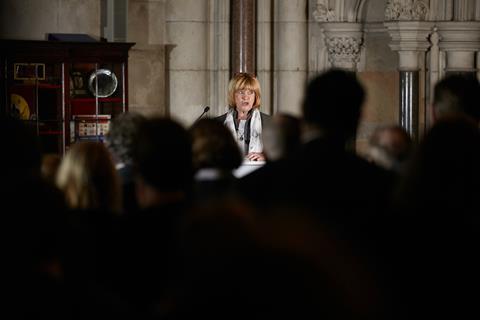A senior judge has called on all organisations to provide a mentor for employees affected by sexual harassment or discrimination.
Lady Justice Hallett told an event celebrating women in the judiciary last night that many women who qualified in the 1950s, 1960s and 1970s suffered sexual assault, discrimination and being patronised, but kept their heads down and hoped eventually their abilities would be recognised. They feared, 'as some women today still fear', they would be considered a trouble maker and their careers would suffer if they reported anyone.
Hallett LJ called on firms to promote a 'zero tolerance' policy on sexual harassment and discrimination. 'Every organisation should provide a mentor or someone to whom those affected can speak about any problems and appropriate steps can be taken to resolve the problem,' she said.
She also urged firms to keep working on eradicating unconscious bias. 'We all suffer from it and alerting people to the problem can be the first step in solving it,' she said.
'Having the female role models to whom I referred will obviously help in getting people to accept that their lawyer, their judge may be female and just as good if not better than a man. But we have not yet reached the stage where a successful woman is accepted as the norm. Changing attitudes of that kind will be a big task, but getting out into schools and into communities, as members of the legal profession and the judges do increasingly, is an excellent start.
A further challenge, she said, is 'to discover a way in which the potential of those who have taken a break from the profession or reduced their work load to care for others can be assessed without being unfair to their competitors'.
Hallett LJ, chair of the Judicial Diversity Committee of the Judges' Council, retired as vice president of the Court of Appeal Criminal Division this month. She will take her seat in the House of Lords after being appointed in Theresa May's resignation honours list.
Hallett LJ was speaking at the Royal Courts of Justice, where hundreds of attendees, including several members of the senior judiciary, saw the red robes worn by Mrs Justice Lane, who in 1965 was the first woman to be appointed in the High Court, displayed.
The robes were subsequently worn by: Dame Margaret Booth, the third woman to be appointed a High Court judge, in 1979; Lady Hale, the first woman to be appointed a member of the Judicial Committee of the House of Lords in 2004 and the first woman president of the Supreme Court; and Lady Black, the second woman to be appointed a Supreme Court justice, in 2018.



























6 Readers' comments